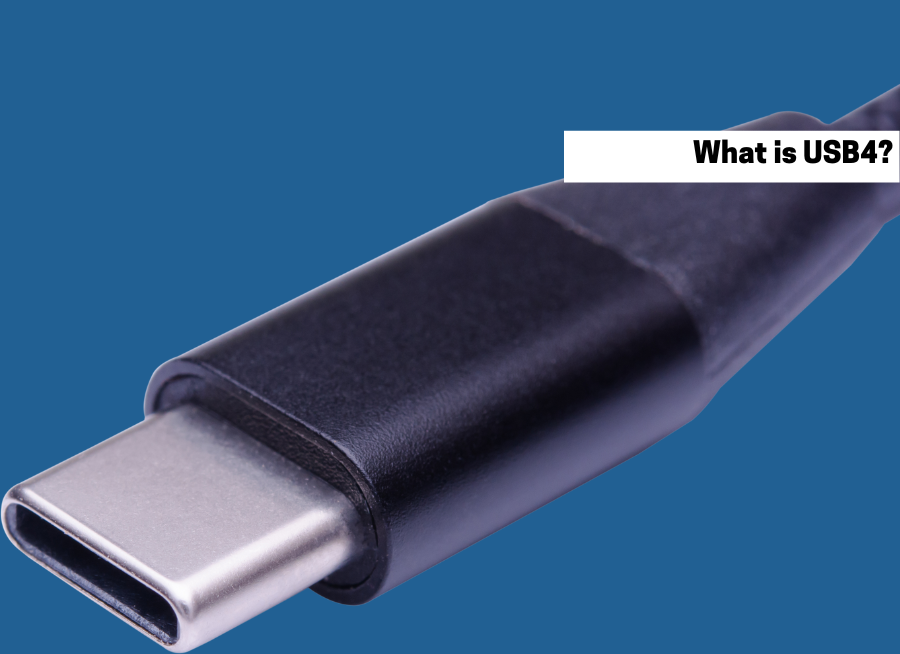What is USB4?

About USB 4
What is USB 4?
USB 4.0 (which is branded as ‘USB4’, with no space between ‘B’ and ‘4’) is the next generation of USB, superseding USB Type-C.
It draws on the Thunderbolt 3 protocol to double the speed of USB Type-C. Instead of transferring data in rigidly allocated quantities through dual lanes, as its predecessors did, it allocates them dynamically.
Let’s take a closer look.
Specification differences between Type-C and USB4
USB4, despite its impressively improved bandwidth, features physical ports that are backwards compatible with the preceding iterations, from USB 2.0 to USB 3.0 to Thunderbolt 3.
The differences between USB Type-C and USB4 are significant, however. The fastest USB C specification relies on USB 3.2 Gen 2x2 tech, transferring data in two lanes of 10Gbps to total 20Gbps (more commonly, USB 3.2 Gen 1 tech will only deliver transfer speeds of up to 5Gbps). USB4, while using an identical physical port profile, resembles the uber-speedy Thunderbolt 3 in delivering data velocities of up to 40Gbps.
It’s also far superior to Type-C in terms of bandwidth allocation. While Type-C splits bandwidth evenly between a computer’s physical connections to a display and a storage device (which can strangle data to the storage device), USB4 does something ingeniously different. It monitors bandwidth requirements for each of the connected devices dynamically. Instead of, as before, transferring data through the data lane and video through the video lane, preventing any unused bandwidth in one being allocated to the other when the demand is greater, USB4 allows data and video to share lanes. This means that they can share the maximum total bandwidth.
Benefits of USB4
To the advantages of improved bandwidth and hugely faster data transfer speeds, add Power Delivery, the super-brawny data transfer tech derived from Thunderbolt 3. It delivers an impressive 100 watts at the upper limit, and in USB4, it is bi-directional between connected devices.
USB4 also has the advantage of DisplayPort 2.0, which supports stunning 8K video resolution at 60 Hz (replete with HDR10 colour) via its Alternative Mode. It’s also backwards compatible with older USB 2.0 and 3.0 devices.
USB4 vs Thunderbolt
Thunderbolt is indisputably a top-drawer protocol for super-fast data transfer – but it lacks (by a wide margin) the huge uptake of USB. As a proprietary Intel standard, Thunderbolt simply isn’t featured on many laptops and desktops (and virtually no motherboards).
USB4, however, will likely overcome this. Intel has now waived its former requirement for royalties when Thunderbolt is used on other devices that are USB4 compatible, which makes mass adoption far more likely (both use the same USB Type-C connector).
For more information about USB4 products, drop an email to EuroNetwork, one of the UK’s leading manufacturers and suppliers of leads and cables, at sales@euronetwork.co.uk.

